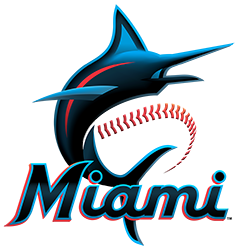The playing conditions will change drastically at Marlins Park in 2020, as the Miami Marlins announce plans to move in outfield fences and install synthetic turf.
Leading up to the 2020 season, the Marlins will swap out their natural grass surface in favor of the Shaw Turf’s B1K: Batting A Thousand–the same surface that was installed by the Arizona Diamondbacks at Chase Field before the 2019 season, and that will be used by the Texas Rangers at the retractable-roof Globe Life Field when it opens in 2020. In Wednesday’s announcement on the changes, the Marlins said that there were challenges with growing natural grass at the retractable-roof Marlins Park, while expressing confidence in the quality of ballpark’s upcoming playing surface.
“In going through the process of evaluating the playing surface at Marlins Park in 2019, we set out to find a solution to combat the challenges we have experienced with growing natural grass in Marlins Park,” Marlins CEO Derek Jeter said in a press statement. “We appreciate the extensive research and new technology from our partners at Shaw Sports Turf to help us deliver a consistent playing field designed to enhance the safety for players and the playability for baseball.”
Along with the switch to synthetic turf, the Marlins will make another change to Marlins Park by moving in the outfield walls in center field and right-center field. Since its 2012 opening, Marlins Park has generally favored pitchers, even when taking into account an adjustment made under former Marlins owner Jeffrey Loria before the 2016 season that included moving in and lowering the height of the outfield walls. Given how drastic this round of changes will be, however, it is possible that Marlins Park could play a bit differently in 2020. More from the Sun-Sentinel:
Playing in one of the least-friendly offensive venues in MLB, the Miami Marlins announced they’ll be moving in the fences for the start of next season. The dimensions in center field and right-center will be reduced by 12 feet, placing deep-center at 400 feet and right-center at 387.
Since opening in 2012, Marlins Park has frequently irritated hitters, who consistently saw well-hit fly balls die in the vast, wasteland of the team’s spacious outfield. Over the past seven seasons, Marlins Park has allowed the second-fewest combined home runs (1,007) out of any MLB ballpark, trailing only San Francisco’s Oracle Park.
This past season, only 173 home runs were hit at Marlins Park — the third-lowest mark in baseball. For comparison, 11 ballparks allowed 240 or more home runs.
The Marlins ownership group led by Jeter and Bruce Sherman has made various changes to Marlins Park since taking over the franchise in the fall of 2017, including renovations last year aimed at improving the fan experience. A new tiered social space in place of the home run sculpture in center field was among those improvements, along with a redesigned premium area and revamped concessions options.

